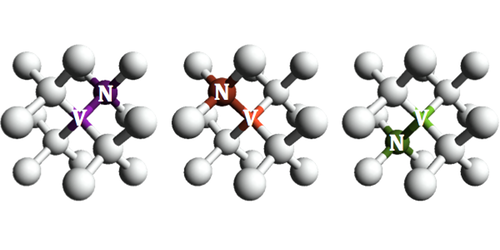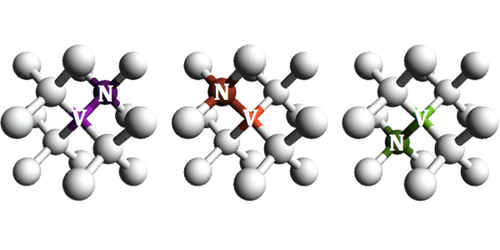A Faster Diamond Magnetometer
The spin state of a diamond defect known as a nitrogen-vacancy (NV) center is highly sensitive to a magnetic field. As such, NV centers can be used as tiny magnetometers. However, sequential measurements are needed to detect each spatial component of a magnetic field, limiting the use of these devices. Now, Ronald Walsworth at Harvard University and colleagues have created an NV-center magnetometer that simultaneously measures all three spatial components of a magnetic field. The new device is 4 times faster than existing diamond-defect magnetometers and can measure fields that are 2 times smaller in strength.
Place an NV center in a magnetic field, and its electronic energy levels shift. This shift causes the center to emit a different number of photons when it is excited with a laser and a microwave signal. To map a 3D field, researchers need several NV centers, all oriented in different directions. But the only way to tell the centers apart is to interrogate each one separately.
Walsworth and colleagues found a way to distinguish the centers by imprinting the photon emission of each with a distinct “beat” pattern. They excited each center with a different frequency-modulated microwave signal, which caused the number of photons it emitted to fluctuate with the same modulated pattern. These patterns allowed them to distinguish the emission from each center and simultaneously measure the spatial components of a magnetic field.
Using their method, the team sampled a magnetic field every 40 s. This timescale is more than twice as fast as what’s needed to track magnetic-field fluctuations in cultures of neurons and heart cells, so the team says that their method could potentially be used for real-time monitoring of these systems.
This research is published in Physical Review Applied.
–Christopher Crockett
Christopher Crockett is a freelance writer based in Arlington, Virginia.





